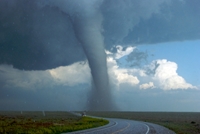Business continuity planning and disaster recovery center around minimizing the change that occur to a company when a crisis occurs.
- 2432 Bernel Road Suite 203 State College, PA 16803
- KETCHConsulting

- 0 Comments
- Ketch
- March 13, 2015
3 ways business continuity helps improve overall operations
Business continuity planning helps protect your company from disaster, but it can also help protect it from bad ideas and poor management in everyday workflows.

- 0 Comments
- Ketch
- March 11, 2015
2 tips for utilizing communications more effectively in a disaster
During a crisis, communication is one of the most important things for survival.

- 0 Comments
- Ketch
- March 9, 2015
Geopolitical conflict could weigh in on business continuity planning
While smaller businesses often don’t think twice about geopolitical impact on their operations, they might need to start as various global situations escalate.

- 0 Comments
- Ketch
- March 5, 2015
Study: Cold weather damaging for small businesses
It’s safe to assume that, even for a 100 percent online business, weather has an impact on operations and profits.

- 0 Comments
- Ketch
- March 3, 2015
Majority of businesses under-prepared for a disaster
Less than half of businesses across the United States are fully prepared to recover from a disaster.

- 0 Comments
- Ketch
- February 27, 2015
Know when to tell your employees to stay home
As part of risk assessment, one factor you’ll need to consider is whether or not it is safe for workers to come into the office, or to tell them to stay home.

- 0 Comments
- Ketch
- February 26, 2015
Assessing cyber risks in 2015
HP recently published its annual Cyber Risk Report for 2015, exploring the cyber security landscape through 2014 and what trends are likely to rise above the rest for this year.

- 0 Comments
- Ketch
- February 25, 2015
Business continuity planning for spring weather
Spring brings a cessation of colder temperatures and snow from winter, but it also brings a variety of business continuity threats of its own that companies need to ensure they are prepared for.

- 0 Comments
- Ketch
- February 24, 2015
5 considerations for business continuity in a power supply interruption
Power supply interruptions aren’t as common a threat in North America as they are in other areas, but the potential still exists, making it essential to optimize your business continuity planning for the risk.

